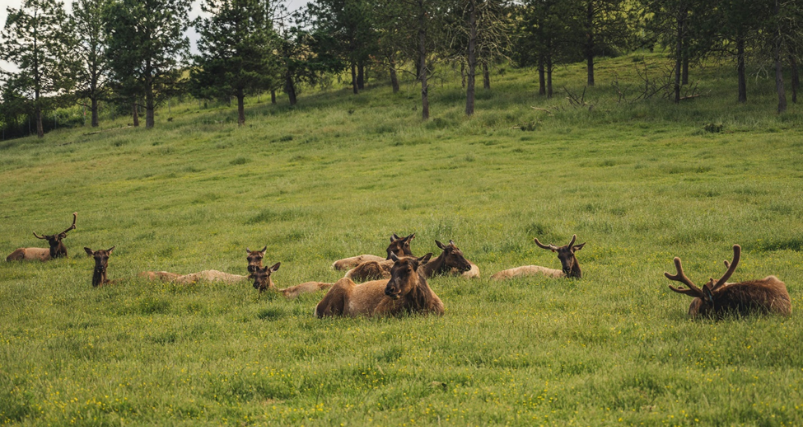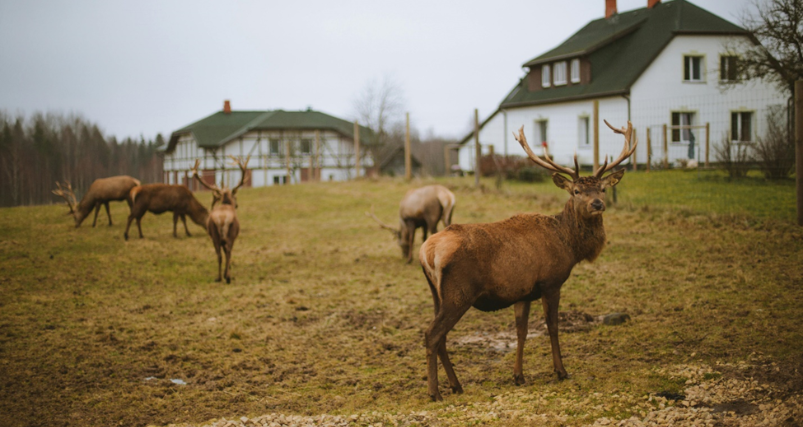My Bookings
Please Enter Your Booking Code To Find Your Booked Tour!

How and Where to See Moose in Maine (A Maine Moose Watching Guide)
Table of Contents
The Maine moose is as elusive and camera-shy as any Hollywood star, but it's also as near to a superstar as a wild animal can get. Experienced Northeast Whitewater licensed Maine guides are necessary if you want to see a Maine moose in its natural habitat and get the Maine moose images to prove it.
Moose eat browse, which is made up of woody plant twigs and leaves. Mountain ash, aspen, birch, maple, pin cherry, and willow are among the valuable, premium fodder that moose use all year round. Balsam fir is an essential winter food source for moose since hardwood trees lose their leaves in the winter. But since balsam fir has less nutritional value, moose cannot thrive on it alone. Insects, fire, wind, and forest management techniques like clear-cutting promote disturbance and regrowth of these important forage trees.
How Rare are Moose in Maine?
Maine is fortunate to be among the few states in the union with a significant moose population. Maine has the second-highest concentration of moose in the nation, behind Alaska, according to state biologists, who estimate the state's moose population at around 75,000.
Many tourists consider seeing the famous Maine moose to be a once-in-a-lifetime opportunity. They are magnificent to see, and getting a picture of one on camera is always thrilling. A mature male moose may easily weigh a thousand pounds or more, and their antlers average six feet in length.
Here are a few tips on where to look for moose:
- Although they are seen almost everywhere, they prefer to congregate in marshy, wetlands environments. They may roll about in the mud, which helps to form a barrier that keeps black flies and mosquitoes away from them. If you're fortunate, you could see one in or close to a body of water since they are excellent swimmers. Since moose require sodium in their diet and natural salt licks are uncommon in Maine, you may also see them licking the salt runoff along roadways.
- In western Maine, there are a few designated areas for moose spotting: Route 201 from The Forks to the Canadian border (known as "Moose Alley"), Route 27 between Carrabassett and Eustis, Route 6 from Dover-Foxcroft to Greenville, the Golden Road, Baxter State Park, and the area surrounding Moosehead Lake (such as Lazy Tom Bog).
When to See Moose in Maine
Naturally, there's no assurance on the precise location of seeing one. Animal behavior may be erratic. The good news is that there's a strong possibility you'll see moose while you're here. Why? With an estimated 76,000 individuals, Maine has the largest moose population in the country outside of Alaska.
Two factors to have in mind are that, due to their height, moose may not be as visible as deer in terms of eye reflections. Additionally, they like to meander about rather than dart as deer do, sometimes sprinting and other times simply standing in the center of the road.
Best time to see moose in Maine
Although they are found all across the state, the Western Lakes and Mountains, the Kennebec Valley, the Maine Highlands, and Aroostook County have the highest densities of moose. From mid-May through July, the ideal times to see them are at twilight and dawn; during their mating season, you may even observe them in the autumn. The magnificent Bull Moose antlers reach their full potential in the autumn. In November or December, they will lose their antlers, and in the spring, new, bigger antlers will start to sprout.
What month is best to see moose in Maine?
The period of late September to mid-October is known as the breeding season, or rut. The guy with his gun is their sole predator. The greatest season to observe moose may be in late May to mid-July, but August through October is still a wonderful period. Moose use the highways to lick salts, which are an essential part of their nutrition.
When can you see moose in Baxter State Park?
There are plenty of moose at Baxter State Park if that's what you're looking for. Proceed towards Daicey Pond between 4:30 and 6:00 p.m. in the late afternoon. You have to be QUIET and STILL! You may need to bide your time. At 4:30 p.m., the longest wait time to view a moose was thirty minutes. There was a bull moose, a female moose, and her young when it got to be six o'clock at night.

(Credit: Brett Sayles/pexels)
How likely are you to see a moose at Moosehead Lake?
Mid-spring through late June is the greatest time of year to watch moose, although the best times of day to observe them are early in the morning or around nightfall. A bell refers to the skin flap located behind a moose's neck. Moose lack upper canines. Moose outnumber humans in the Moosehead Lake Region three to one. Antlers are only grown by male moose, who lose them in the early winter and develop new ones later in the year. Antlers are mostly used for show during the mating season.
Where to see Moose In Maine
Northern Outdoors is located in an ideal area for moose sightings. Compared to the coast or southern areas, moose are concentrated in western and northern Maine. You may start well by making plans to visit The Forks Adventure Resort or the appropriately titled Big Moose Inn, which is located just outside of Baxter State Park.
Never attempt to approach or pursue moose. Despite not being carnivores, moose's massive size gives them great strength, and if they feel threatened, they may charge. When it comes to the autumn mating season, males (bulls) weigh over 1,100 pounds and may be more aggressive, while females (cows) weigh over 800 pounds and are fiercely protective of their calves.
Where is the best place to see wild moose in Maine?
Several campgrounds in Maine State Parks provide excellent basecamps for local moose viewing. These camping parks—Rangeley Lake State Park, Mount Blue State Park, Lily Bay State Park, and Peaks-Kenny State Park—are situated in or close to areas of Maine that provide plenty of chances to see moose.
Where to see moose near Portland Maine?
Along the trip, you may see other species that may be met and observe these majestic animals safely and comfortably while learning about the ecology and behaviors of moose from an experienced guide. In some areas of Maine, visitors on moose excursions may see up to 20 moose in a single excursion at the appropriate time of year.
Where to see moose in Southern Maine?
Although they are found all across the state, the Western Lakes and Mountains, the Kennebec Valley, the Maine Highlands, and Aroostook County have the highest densities of moose. From mid-May through July, the ideal times to see them are at twilight and dawn; during their mating season, you may even observe them in the autumn.

(Credit: Anastasia Shuraeva/pexels)
Are there moose in Acadia National Park?
The ungulate family comprises the majority of the species that inhabit Acadia. This applies to moose and, on rare occasions, white-tailed deer. Moose are fairly massive creatures that need a lot of room; hence, they are not often seen in Acadia. Conversely, white-tailed deer are widely distributed. The best times to observe them are along the carriage routes or in the Sieur de Monts region at dawn or dusk.
Our local lagomorph or rabbit species are other herbivorous creatures that are often disregarded. Compared to the more common cottontail rabbit, the Snowshoe Hare is much larger. It's well-known that snowshoe hares are completely white in the winter and brown in the summer. Early spring and autumn are the ideal times of year to watch them because their coats color is changing.
Moose safari Maine
The most well-known inhabitant of Moosehead, the moose, is still missing, and yes, they are larger than you may have imagined! One of the only states with a healthy moose population is Maine, where there are three times as many moose as humans in the Moosehead Lake Region!
It is hardly surprising that moose have chosen the Moosehead Lake area as their home for years given that these elusive creatures love seclusion and heavy woodland cover in their natural environment. All four seasons give ample possibilities to observe moose thanks to an extensive network of abandoned woodland paths, and expert tour services allow unparalleled access to the mooses' deepest woods region.
The guided interpretive nature trip includes local history and legend along with beautiful landscapes, animal viewing, and moose viewing. The wilderness of the Moosehead Lake area, with its extensive road network and thousands of acres of untamed territory, might be a little intimidating for visitors. You won't have to worry about where you're going or if you should have taken that last turn when a guide is conducting the trip. You may take it easy, take in the view, and spend time with your guide. However, be vigilant as wildlife, including Maine Moose, frequents this region and may appear at any time, so get involved in the hunt! This excursion has it all, from breathtaking mountain views to well-kept moose hangouts.
Final thoughts
While you can view moose year-round, the ideal time to observe them is from May to mid-July; however, if you want to see an antlered bull, September and October are the best months. Speaking of time, moose are more active during dawn and twilight since the temperature is a little lower at these times. Driving should always be done extremely carefully, particularly after dark.
Related Blogs
Quick Links
Book your Tour
Get in Touch
Toll Free
1-888-961-6584
Local
1-289-271-9767
Fax
1-888-908-6056
4.8 rating | 5,753 reviews
© 2024 Tripshepherd. All Rights Reserved.
© 2024 Tripshepherd. All Rights Reserved.
4.8 rating | 5,753 reviews
1-888-961-6584





